Atlantic Monthly Contributors's Blog, page 260
January 6, 2016
Iran’s Beleaguered Sunnis
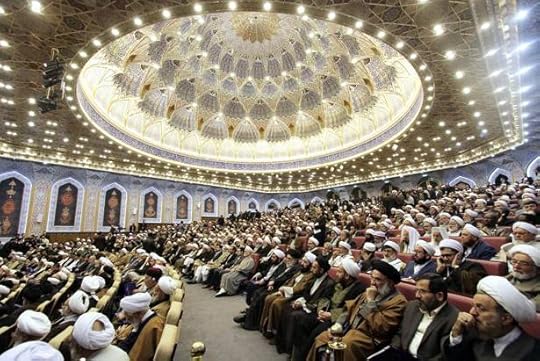
The execution of Sheikh Nimr al-Nimr has brought new attention to the relatively obscure and precarious Shiites of Saudi Arabia, as I wrote Tuesday. But what about Sunnis in Iran? Just as Saudi Arabia is practically synonymous with Sunni Wahhabism, Iran—the world’s largest Shia country—is the demographic and scholarly center of the sect. Yet around 9 percent of the population is Sunni.
The already-heightened rivalry between Saudi Arabia and Iran is ratcheting up, fed by Nimr’s execution over the weekend. Despite occasional insistences that this is simply the latest flare-up in a 1,400-year-old battle between Sunnis and the Shiites, the more persuasive case—as Marc Lynch points out—is that it is a battle between two rival regional powers who are exploiting sectarian differences for political gain. It is, Lynch writes, “cynical manipulation of identity politics by regimes seeking to advance their domestic and foreign policy interests. … Sectarianism today is intense, but that is because of politics.” Regardless of the causes, the tension puts more pressure on the minority sects in each country.
Related Story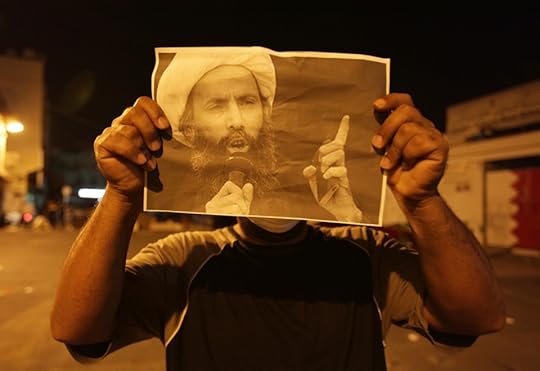
Sheikh Nimr al-Nimr and the Forgotten Shiites of Saudi Arabia
First, a brief history lesson: How did Iran become Shia? Until the 16th century, Persia was mostly Sunni. At the turn of that century, the Safavid dynasty conquered much of what is now Iran and made Shiism the official religion. The conversion was accompanied by a massive crackdown on Sunnis, so that over time much of the population became Shia. Today, most of the Sunnis who remain are mostly from minority ethnic groups—Arabs, Turkmen, Kurds, Baluch—rather than Persians. That makes some discrimination based on religion difficult to separate from ethnic discrimination, according to the U.S. State Department. Many of these Sunnis also live in remote, impoverished areas, making it difficult to tell whether poor government services are a result of sectarian discrimination or not.
The state of religious freedom in Iran is not good—Freedom House ranks it “not free,” with nearly the lowest rating, in its annual report. (That’s still enough to best Saudi Arabia, which Freedom Houses places in the “worst of the worst.”) In addition to Sunnis, there are several smaller non-Muslims groups, notably Bahais, Jews, Christians, and Zoroastrians. Compared to them, Sunnis have greater legal protections. Sunni schools of Islamic jurisprudence are officially recognized in the constitution as sources of family law and religious education. Sunnis can serve in the parliament, though they’re not afforded the few reserved seats given to other religious minorities.
In practice, however, the status of Sunnis appears more precarious. As of the end of 2015, the State Department said there were hundreds of religious minorities, including Sunnis, imprisoned. Sunnis complain that though there are an estimated 1 million of them in Tehran, there are no Sunni mosques in the capital. In addition, the State Department noted in its most recent annual religious-freedom report that religious readers had said Sunni literature and teachings were banned in public schools, and new construction of Sunni mosques and schools was banned. Also:
There were reports of arrests and harassment of Sunnis. The International Campaign for Human Rights in Iran (ICHRI) cited activist reports that authorities in Ahvaz arrested 20 Arab-Iranians February 26 for converting from Shia Islam to Sunni Islam, arresting them in a house raid without a warrant and then detaining them in an MOIS office. Mohammad Kayvan Karimi, Amjad Salehi, and Omid Payvand were sentenced to death May 4 on charges of “enmity against God through spreading propaganda against the system.” According to Human Rights Activists News Agency (HRANA), the three were active in preaching Sunni Islam.
In addition, Iranian Sunnis reported raids on worship sites, and being prevented from celebrating Eid al-Adha in 2014. Last summer, clandestine worship spaces for Sunnis in Tehran were reportedly destroyed.
One way that Sunnis—as well as disaffected non-Sunni members of Iranian society—have responded to this environment is to embrace Salafism, hardline Sunni orthodoxy, according to Mehdi Khalaji, a fellow at the Washington Institute for Near East Policy. The Internet has allowed Salafis to spread their ideas and create networks throughout the country. “This is one of the reasons why the regime does not allow Sunnis to build mosques in Tehran or other large cities—it is deeply concerned about Salafis using them to recruit young Shiites who are frustrated with the Islamic Republic’s ideology,” Khalaji wrote in 2013. They also often have ties to Iran’s regional foes, especially Saudi Arabia. “Given these factors and the increasing resentment among Iran’s Arab, Kurdish, and Baluch population, the growth of Salafism is a clear security threat to the regime.”
Nonetheless, President Hassan Rouhani promised during his 2013 campaign to improve religious freedom and tolerance, and he fared particularly well in voting in regions with heavy Sunni representation. Rouhani has since repeated his desire to improve Sunni-Shia relations, and the government has trumpeted its outreach. However, the 2015 annual report of the U.S. Commission on International Religious Freedom concluded that “President Hassan Rouhani has not delivered on his campaign promises to strengthen civil liberties for religious minorities,” citing, among other things, the growth in the number of Sunni Muslims imprisoned for their beliefs.
The growth of ISIS, which is Sunni, doesn’t make Iran’s opening up to Sunnis any more likely—especially when taken with a fear of growing Salafism within the country, and paired with widespread (but unsubstantiated) belief in parts of the Middle East that the Saudi government is funding ISIS. In November, Iranian authorities said they had smashed an ISIS-affiliated cell in Western Iran, in a Kurdish Sunni province.
Along with the new tensions with Saudi Arabia, all of this points to a more difficult life for Sunnis in Iran in the near future—perhaps pushing more of them toward Salafism. That’s the trouble for both Saudi Arabia and Iran in stoking tensions for geopolitical gain: The motives may be cynical and strategic, but the sectarian strife they foment isn’t easily put to rest.









American Crime: More Method, Less Madness
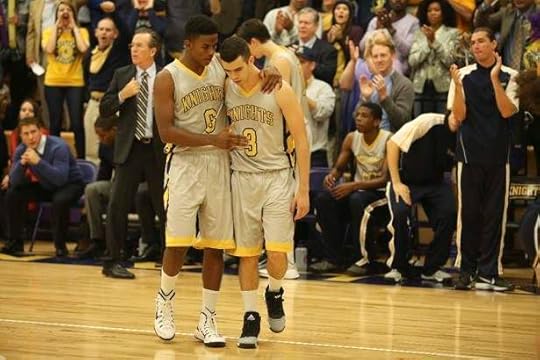
From Making a Murderer to The Jinx to FX’s upcoming American Crime Story, true crime is the TV genre du jour, making salacious murders or miscarriages of justice just as binge-worthy as your favorite fictional dramas. ABC’s American Crime, which enters its second season tonight, is a stranger beast. It has all the methodical hallmarks of a true-crime series, approaching a complicated case from a thousand angles with sensitivity and grace. But because it’s fictional, it has the strange sense of being perfectly calibrated—in other words, it lacks the messiness and peculiarity that makes a real crime story so compelling.
Related Story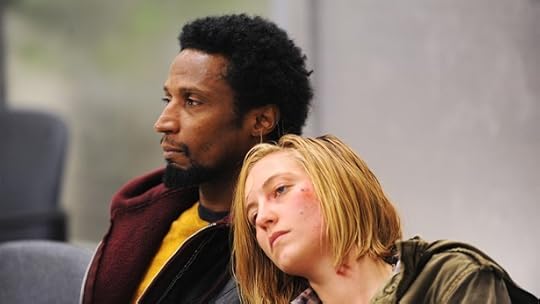
American Crime Tackles Fear and Loathing in the U.S. Justice System
The first season of John Ridley’s show was bleak stuff, dealing with the murder of a veteran, police bias against people of color, and the pervasive effects of drug use in post-military life. It was superbly acted and made a concerted effort to avoid the pulpiness you might associate with a murder mystery. For the anthology show’s second season, Ridley has doubled down. He’s reassembled his terrific cast (including Felicity Huffman, Timothy Hutton, Regina King, and Lili Taylor) to tell the story of a teenage boy who was allegedly drugged and raped by athletes at a high-school party. Once again, American Crime admirably steers away from lurid territory to explore this tricky topic and all the racial and social issues that surround it—but this approach has the unintended effect of holding viewers at arm’s length from the story.
The fictional case draws on the Steubenville High School rape case of 2012, as well as a recent trial stemming from allegations of sexual assault at St. Paul’s School, and the case of Emma Sulkowicz (whose iconic mattress-carrying is referenced by the show’s victim). But in switching the victim’s gender, Ridley is asking pertinent questions about homophobic bias, society’s paternalistic perspectives, and the gray areas where race and class intersect. The victim (played by Connor Jessup), is a poorer white kid at a private school on a scholarship—some of the motivation for the crime initially appears to be motivated by his social standing, as images of him in a compromised position are passed around the school tagged with the word “white trash.”
Both of the students accused of the rape are on the basketball team—one is white and the other black, and both have their own privileges (their popularity at school, their family’s wealth). And yet Ridley doesn’t attempt to take any kind of one-sided stand with American Crime. He’s not telling a story about rich people versus poor people, or white people versus people of color, or men versus women. He makes sure to give each character—Felicity Huffman as the school’s politic headmaster, Timothy Hutton as the protective basketball coach, Lili Taylor as the victim’s distraught mother, Andre Benjamin as an athlete’s conflicted father—a solid balance of flaws and virtues, so there’s no absolute villain to root against, no singular source of injustice.
Ridley doesn’t attempt to take any kind of one-sided stand with the second season of American Crime.Maybe that’s why American Crime is a tougher watch than some of the more lurid true-crime entries of recent memory. It’s hard to get worked up when such nuanced stuff is being presented, and when there’s no real-life monster or societal ill on which to blame the horrors unfolding before your eyes. But this year’s case is more propulsive than season one’s murder mystery because it’s harder to see some obvious twist coming down the pike (in season one, the ensemble was less interconnected, so it was easy to assume that a plot device would eventually bring them all together). Ridley should be applauded for creating an involving world from the ground up so quickly without ever relying on stereotype.
But American Crime still feels academic and inert at times. It’s so methodical in laying out its dominoes that you’re almost too prepared when they eventually fall. The characters are well-drawn, but each is obviously there to represent the pitfalls that develop in a complicated criminal case like this one. Huffman’s headmaster is too intent on keeping things quiet; Taylor’s character ignores her son’s touchiness about the crime and is fueled by anger at a system that keeps trying to shut her down; Hutton’s coach can’t see past his own fatherly feeling for his players even as truths come to light. Ridley sets this all up carefully and thoughtfully, but if anything American Crime’s thoughtfulness is at once its greatest strength and weakness: It handles everything perfectly, but in doing so, it sacrifices much of the thrill viewers might expect from a crime drama.









New Doubts Over North Korea’s Claim of a Hydrogen-Bomb Test
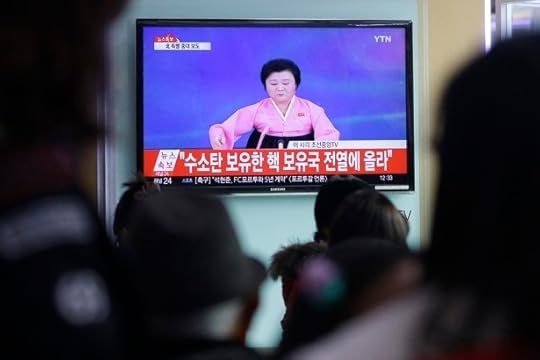
Updated at 2:22 p.m. on January 6
What we know so far:
—North Korea says it successfully detonated its first hydrogen bomb on Wednesday morning at the Punggye-ri Nuclear Test Site. It called the test a “self-defense against the U.S. having numerous and humongous nuclear weapons.”
—Although there has been no independent confirmation of the test, condemnation has been nearly unanimous. China, North Korea’s main ally, says it did not know anything about the test, adding it “firmly” opposes the move. Similar statements were issued by Russia, the EU, NATO, the White House’s National Security Council, and the UN Security Council.
—There is skepticism from experts about North Korea’s claim. The White House said “initial analysis … is not consistent with” claims of a successful hydrogen-bomb test.
—Still, if confirmed, this would be North Korea’s fourth nuclear test. Pyongyang previously tested at Punggye-ri in 2006; additional detonations followed in 2009 and 2013. The previous tests detonated atomic bombs, which rely on nuclear fission. This test, North Korea says, tested a hydrogen bomb, which relies on both fission and fusion, producing a chain reaction that’s far more powerful than an atomic bomb.
There’s skepticism among nuclear experts and governments about North Korea’s claim Wednesday that it has successfully detonated its first hydrogen bomb, with the White House saying its initial analysis was “not consistent” with Pyongyang’s announcement.
“The initial analysis that has been conducted of the events that were reported overnight is not consistent with North Korean claims of a successful hydrogen bomb test,” Josh Earnest, the White House spokesman, said. “There’s nothing that’s occurred in the last 24 hours that has caused the United States government to change our assessment of North Korea’s technical and military capabilities.”
Nuclear and regional experts were also skeptical.
*IF* yield is c. 10 kT, seems unlikely to be true 2-stage thermonuclear bomb. Maybe a small boosted primary? Or a vanilla fission device?
— James Acton (@james_acton32) January 6, 2016
Helpful North Korea context from Denny Roy, of the East-West Center: pic.twitter.com/b6bvKsTfMM
— Adrienne LaFrance (@AdrienneLaF) January 6, 2016
Carl Bildt, the former Swedish prime minister, tweeted:
Very serious provocation by North Korea, although it's unlikely to have been a fully-fledged fusion bomb.https://t.co/8eHHQrSNzN
— Carl Bildt (@carlbildt) January 6, 2016
The Arms Control Association in Washington pointed out that early readings “suggest a relatively low-yield underground nuclear test was conducted.” And, it added:
Determining what kind of fissile material was used for the bomb will be a challenge even if the radioactive gases produced by the test are once again detected by remote monitoring systems and airborne detection systems — a process that can take several days or even weeks as noble gases produced by the explosion seep up from the ground into the atmosphere.
The U.S. Geological Survey recorded a 5.1-magnitude seismic event about 11 miles from the North Korean town of Sunjibaegam in the country’s northwest. Tremors of a similar magnitude followed each of North Korea’s three previous nuclear-weapons tests— in 2006, with which it became the eighth declared nuclear-weapons state; 2009, and 2013— all of which occurred underground at the nearby Punggye-ri Nuclear Test Site. Experts pointed out that the magnitude of the tremors should have been far greater had Wednesday’s test been of a hydrogen bomb, which is far more powerful than the atomic bombs North Korea tested on the three previous occasions.
Atomic bombs rely on nuclear fission to achieve their destructive purpose. Like a dropped water balloon hitting a sidewalk, atomic bombs crack open the dense atomic nuclei of large, unwieldy elements like uranium and plutonium to release tremendous amounts of energy.
Hydrogen bombs, by contrast, use nuclear fission only for their initial detonation, igniting a secondary fusion stage by compressing lighter atoms of deuterium and tritium together until they explode, like filling up a water balloon until it bursts. The chain reaction produces a far more powerful explosion than an atomic bomb.
North Korea announced its test on state media on Wednesday morning.
“The first H-bomb test was successfully conducted in the DPRK at 10:00 (0130 GMT) on Wednesday,” KCNA, the state-run news agency, reported, using the official name for North Korea.
You can watch the announcement here (in Korean):
Pyongyang dropped hints about a possible nuclear test in the weeks preceding Wednesday’s detonation. Over the weekend, South Korea’s Yonhap News Agency reported the North could be readying for a nuclear-weapons test. The reclusive communist state also reportedly tested a submarine-based ballistic missile last month.
The first reports that North Korea might have a hydrogen bomb also emerged in the waning days of 2015. On December 10, KCNA quoted Kim Jong-un, the North Korean leader, as describing the country as “a powerful nuclear weapons state ready to detonate a self-reliant A-bomb and H-bomb to reliably defend its sovereignty and the dignity of the nation.” Nuclear experts and the White House publicly expressed doubt about Kim’s hydrogen-bomb claim at the time.
South Korean officials quickly condemned the test nonetheless, describing it as a violation of multiple United Nations Security Council resolutions and hinting at possible future sanctions. Other regional leaders echoed the sentiment. “North Korea’s latest nuclear test is a grave threat against our security and we absolutely cannot allow it,” Japanese Prime Minister Shinzo Abe told reporters, according to Asahi Shinbun.
China, North Korea’s closest ally, said it was unaware of plans for the test, but said it was “firmly” opposed to the move.
“China is steadfast in its position that the Korean Peninsula should be denuclearized and nuclear proliferation be prevented to maintain peace and stability in Northeast Asia,” said Hua Chunying, the Foreign Ministry spokeswoman. Her comments were reported by Xinhua, the state-run news agency.
Federica Mogherini, the EU’s foreign-policy chief, said the test, if confirmed, “would represent a grave violation of [North Korea’s] international obligations.”
Jens Stoltenberg, NATO’s secretary-general, said the test “undermines regional and international security, and is in clear breach of UN Security Council resolutions.”
In Moscow, Dmitry Peskov, a Kremlin spokesman, said Russia, upon President Vladimir Putin’s orders, was investigating North Korea’s claims.
“Moscow is extremely concerned over information that has appeared that North Korea has tested a hydrogen bomb,” he said.
The test’s impact could also be felt in financial markets. Shares fell across Asia, but rallied in China. Markets in the U.S. and Europe were sharply lower, though a 11-year low in oil prices, as well as general worries about the global economy, contributed significantly to those declines.
The UN Security Council said it was considering “significant measures” against the North while Ban Ki-moon, the UN secretary-general, called the claim “deeply troubling.”
Related Video
An illustration of mankind's creativity when it comes to killing








Why the British Tell Better Children’s Stories

If Harry Potter and Huckleberry Finn were each to represent British versus American children’s literature, a curious dynamic would emerge: One defeats evil with a wand, the other takes to a raft to right a social wrong. In a literary duel for the hearts and minds of children, one is a wizard-in-training at a boarding school in the Scottish Highlands, while the other is a barefoot boy drifting down the Mississippi, beset by con artists, slave hunters, and thieves. Both orphans took over the world of English-language children’s literature, but their stories unfold in noticeably different ways.
The small island of Great Britain is an undisputed powerhouse of children’s bestsellers: The Wind in the Willows, Alice in Wonderland, Winnie-the-Pooh, Peter Pan, The Hobbit, James and the Giant Peach, Harry Potter, and The Lion, the Witch, and the Wardrobe. Significantly, all are fantasies. Meanwhile, the United States, also a major player in the field of children’s classics, deals much less in magic. Stories like Little House in the Big Woods, The Call of the Wild, Charlotte’s Web, The Yearling, Little Women, and The Adventures of Tom Sawyer are more notable for their realistic portraits of day-to-day life in the towns and farmlands on the growing frontier. If British children gathered in the glow of the kitchen hearth to hear stories about magic swords and talking bears, American children sat at their mother’s knee listening to tales larded with moral messages about a world where life was hard, obedience emphasized, and Christian morality valued. Each style has its virtues, but the British approach undoubtedly yields the kinds of stories that appeal to the furthest reaches of children’s imagination.
It all goes back to each country’s distinct cultural heritage. For one, the British have always been in touch with their pagan folklore, says Maria Tatar, a Harvard professor of children’s literature and folklore. After all, the country’s very origin story is about a young king tutored by a wizard. Legends have always been embraced as history, from Merlin to Macbeth. “Even as Brits were digging into these enchanted worlds, Americans, much more pragmatic, always viewed their soil as something to exploit,” says Tatar. Americans are defined by a Protestant work ethic that can still be heard in stories like Pollyanna or The Little Engine That Could.
Americans write fantasies too, but nothing like the British, says Jerry Griswold, a San Diego State University emeritus professor of children’s literature. “American stories are rooted in realism; even our fantasies are rooted in realism,” he said, pointing to Dorothy who unmasks the great and powerful Wizard of Oz as a charlatan.
American fantasies differ in another way: They usually end with a moral lesson learned—such as in the surprisingly zany works by Dr. Seuss who has Horton the elephant intoning: “A person’s a person no matter how small,” and, “I meant what I said, and I said what I meant. An elephant’s faithful one hundred percent.” Even The Cat in the Hat restores order from chaos just before mother gets home. In Oz, Dorothy’s Technicolor quest ends with the realization: “There’s no place like home.” And Max in Where the Wild Things Are atones for the “wild rumpus” of his temper tantrum by calming down and sailing home.
Landscape matters: Britain’s antique countryside, strewn with moldering castles and cozy farms, lends itself to fairy-tale invention. As Tatar puts it, the British are tuned in to the charm of their pastoral fields: “Think about Beatrix Potter talking to bunnies in the hedgerows, or A.A. Milne’s Winnie-the-Pooh wandering the Hundred Acre Wood.” Not for nothing, J.K. Rowling set Harry Potter’s Hogwarts School of Witchcraft and Wizardry in the spooky wilds of the Scottish Highlands. Lewis Carroll drew on the ancient stonewalled gardens, sleepy rivers, and hidden hallways of Oxford University to breathe life into the whimsical prose of Alice in Wonderland.
America’s mighty vistas, by contrast, are less cozy, less human-scaled, and less haunted. The characters that populate its purple mountain majesties and fruited plains are decidedly real: There’s the burro Brighty of the Grand Canyon, the Boston cop who stops traffic in Make Way for Ducklings, and the mail-order bride in Sarah, Plain and Tall who brings love to lonely children on a Midwestern farm. No dragons, wands, or Mary Poppins umbrellas here.
Popular storytelling in the New World instead tended to celebrate in words and song the larger-than-life exploits of ordinary men and women.Britain’s pagan religions and the stories that form their liturgy never really disappeared, the literature professor Meg Bateman told me in an interview on the Isle of Skye in the Scottish Highlands. Pagan Britain, Scotland in particular, survived the march of Christianity far longer than the rest of Europe. Monotheism had a harder time making inroads into Great Britain despite how quickly it swept away the continent’s nature religions, says Bateman, whose entire curriculum is taught in Gaelic. Isolated behind Hadrian’s Wall—built by the Romans to stem raids by the Northern barbarian hordes—Scotland endured as a place where pagan beliefs persisted; beliefs brewed from the religious cauldron of folklore donated by successive invasions of Picts, Celts, Romans, Anglo-Saxons, and Vikings.
Even well into the 19th and even 20th centuries, many believed they could be whisked away to a parallel universe. Shape shifters have long haunted the castles of clans claiming seals and bears as ancestors. “Gaelic culture teaches we needn’t fear the dark side,” Bateman says. Death is neither “a portal to heaven nor hell, but instead a continued life on earth where spirits are released to shadow the living.” A tear in this fabric is all it takes for a story to begin. Think Harry Potter, The Chronicles of Narnia, The Dark Is Rising, Peter Pan, The Golden Compass—all of which feature different worlds.
These were beliefs the Puritans firmly rejected as they fled Great Britain and religious persecution for the New World’s rocky shores. America is peculiar in its lack of indigenous folklore, Harvard’s Tatar says. Though African slaves brought folktales to Southern plantations, and Native Americans had a long tradition of mythology, little remains today of these rich worlds other than in small collections of Native American stories or the devalued vernacular of Uncle Remus, Uncle Tom, and the slave Jim in Huckleberry Finn.
Popular storytelling in the New World instead tended to celebrate in words and song the larger-than-life exploits of ordinary men and women: Daniel Boone, Davy Crockett, Calamity Jane, even a mule named Sal on the Erie Canal. Out of bragging contests in logging and mining camps came even greater exaggerations—Tall Tales—about the giant lumberjack Paul Bunyan, the twister-riding cowboy Pecos Bill, and that steel-driving man John Henry, who, born a slave, died with a hammer in his hand. All of these characters embodied the American promise: They earned their fame.
British children may read about royal destiny discovered when a young King Arthur pulls a sword from a stone. But immigrants to America who came to escape such unearned birthrights are much more interested in challenges to aristocracy, says Griswold. He points to Mark Twain’s The Prince and the Pauper, which reveals the two boys to be interchangeable: “We question castles here.”
In Scotland, Bateman in turn suggests the difference between the countries may be that Americans “lack the kind of ironic humor needed for questioning the reliability of reality”—very different from the wry, self-deprecating humor of the British. Which means American tales can come off a bit “preachy” to British ears. The award-winning Maurice Sendak-illustrated book of etiquette: What Do You Say, Dear? comes to mind. Even Little Women is described by Bateman as something of a Protestant “parable about doing your best in trying circumstances.”
Maybe a world not fixated on atonement and moral imperatives is more conducive to a rousing tale. In Edinburgh—an old town like Rome built on seven hills, where dark alleys drop from cobbled streets, dive under stone buildings, and descend crooked stairs to make their way to the sea—8-year-old Caleb Sansom is one kid who thinks so. Digging with his mum through the stacks of the downtown library, he said he likes stories with “naughty animals, doing people things.” Like Mr. Toad in The Wind in the Willows “who drives fast, gets in accidents, sings, and goes to jail.” As for American books such as The Little House in the Big Woods: “There’s a bit too much following the rules. ‘Do this. Stop doing that.’ Can get boring.”
Pagan folktales are less about morality and more about characters like the trickster who triumphs through wit and skill: Bilbo Baggins outwits Gollum with a guessing game; the mouse in the The Gruffalo avoids being eaten by tricking a hungry owl and fox. Griswold calls tricksters the “Lords of Misrule” who appeal to a child’s natural desire to subvert authority and celebrate naughtiness: “Children embrace a logic more pagan than adult.” And yet Bateman says in pagan myth it’s the young who possess the qualities needed to confront evil. Further, each side has opposing views of naughtiness and children: Pagan babies are born innocent; Christian children are born in sin and need correcting. Like Jody in The Yearling who, forced to kill his pet deer, must understand life’s hard choices before he can forgive his mother and shoulder the responsibility of manhood.
It turns out that fantasy—the established domain of British children’s literature—is critical to childhood development.Ever since Bruno Bettelheim wrote The Uses of Enchantment about the psychological meaning of fairy tales, child psychologists have looked at storytelling as an important tool children use to work through their anxieties about the adult world. Fairy-tale fantasies are now regarded as almost literal depictions of childhood fears about abandonment, powerlessness, and death.
Most successful children’s books address these common fears through visiting and revisiting the same emotional themes, says Griswold. In his book, Feeling Like a Kid: Childhood and Children’s Literature, he identifies five basic story mechanisms children find particularly compelling—snug spaces, small worlds, scary villains, lightness or flying, as well as animated toys and talking animals—all part of the serious business of make-believe.
“Kids think through their problems by creating fantasy worlds in ways adults don’t,” Griswold says. “Within these parallel universes, things can be solved, shaped and understood.” Just as children learn best through hands-on activities, they tend to process their feelings through metaphorical reenactments. “Stories,” Griswold noted, “serve a purpose beyond pleasure, a purpose encoded in analogies. Story arcs, like dreams, have an almost biological function.”
It turns out that fantasy—the established domain of British children’s literature—is critical to childhood development. With faeries as voices from the earth, from beyond human history, with a different take on the meaning of life and way of understanding death, Bateman says there’s wisdom in recognizing nature as a greater life force. “Pagan folklore keeps us humble by reminding us we are temporary guests on earth—a true parable for our time.”
Today there may be more reason than ever to find solace in fantasy. With post-9/11 terrorism fears and concern about a warming planet, Griswold says American authors are turning increasingly to fantasy of a darker kind—the dystopian fiction of The Hunger Games, The Giver, Divergent, and The Maze Runner. Like the collapse of the Twin Towers, these are sad and disturbing stories of post-apocalyptic worlds falling apart, of brains implanted with computer chips that reflect anxiety about the intrusion of a consumer society aided by social media. This is a future where hope is qualified, and whose deserted worlds are flat and impoverished. But maybe there’s purpose. If children use fairy tales to process their fears, such dystopian fantasies (and their heroes and heroines) may model the hope kids need today to address the scale of the problems ahead.









What Bernie Sanders Thinks Is Wrong With the Fed
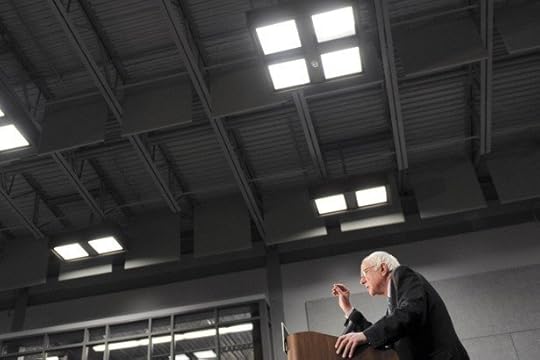
Bernie Sanders detailed a number of his financial-policy proposals in New York on Tuesday. Though he’s been clear in the past that he thinks America’s biggest banks should be broken up, one particularly notable section of his speech on Tuesday was the part outlining how exactly he plans to reform the Federal Reserve, the U.S.’s central bank:
In my view, it is unacceptable that the Federal Reserve has been hijacked by the very bankers it is in charge of regulating. I think the American people would be shocked to learn that Jamie Dimon, the CEO of JPMorgan Chase, served on the board of the New York Fed at the same time that his bank received a $391 billion bailout from the Federal Reserve. That is a clear conflict of interest that I would ban as president. When I am elected, the foxes will no longer be guarding the henhouse at the Fed. Under my administration, banking industry executives will no longer be allowed to serve on the Fed’s boards and handpick its members and staff.
Sanders is referring to what critics call the “revolving door,” the shuffle of financiers between positions at the Fed and jobs in the financial sector. This public-private overlap has prompted concerns that regulators are going easy on the firms they oversee, with the hope that someday they’d get a job from one of those firms—which would be a huge conflict of interest.
The list of government officials who have passed through the revolving door is long, and includes high-ranking regulators such as former Fed Chairman Alan Greenspan, who became a consultant to not one, but three Wall Street firms shortly after leaving the Fed, and former Treasury Secretary Timothy Geithner, who became the president of the private-equity firm Warburg Pincus. Even Ben Bernanke, a tenured professor at Princeton before he became Fed Chairman, became a senior adviser for the billion-dollar hedge fund Citadel not long after his government job ended.
Concerns over the revolving door is especially high in New York, where the New York Fed exists in close proximity to major outposts of America’s biggest financial institutions. This proximity became the focus of a 2014 ProPublica investigation that documented not only the coziness of rulemakers and bankers, but the way it leads to lax regulation: One former New York Fed examiner claimed she was fired for questioning policies at Goldman Sachs, though her lawsuit against the Fed has been dismissed.
The New York Fed’s own study, which was published last year and considered 35,000 former and current regulators, identified numerous examples of public employees quickly turning private. The study found that banks hire former regulators more aggressively when the government is implementing lots of regulations or enforcing existing regulations more strictly, likely because such people are highly knowledgeable when it comes to the ins and outs of those regulations. Overall, the report was skeptical of the claim that regulators were going easy on banks in return for cushy jobs, and raised the important question of what the Fed’s talent pool of potential hires would look like in the absence of a revolving door.
The Fed, for its part, is already considering new measures for neutralizing the revolving door, including imposing some post-employment restrictions on Fed examiners.









The Fallout From the Reports of Sexual Assaults in Cologne
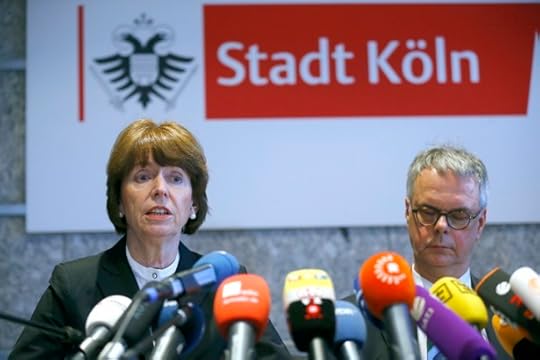
In October, Henriette Reker, who was running for mayor of Cologne, became the face of Germany’s welcoming attitude toward the refugees and migrants who entered the country in 2015.
A German man, angered by Reker’s liberal views on migration, stabbed her in the neck, a day before Cologne, one of Germany’s most diverse cities, voted in mayoral elections. Reker, an independent candidate supported by Chancellor Angela Merkel’s CDU party, triumphed—highlighting, among other things, how welcoming Germany has been of people fleeing civil war in Syria and unrest elsewhere.
Indeed, the country’s Interior Ministry announced Wednesday that 1,091,894 people were registered as asylum seekers in 2015. Syrians were the biggest group (428,468 ), followed by Afghans (154,046), and Iraqis (121,662).
What a difference two months make: Germans are divided over whether the country can handle the influx of migrants and about the government’s position on refugees. And they are mocking Reker’s comment following criminal complaints by more than 100 women who say they were sexually assaulted—two say they were raped—on New Year’s Eve in Cologne by men of “Arab or North African” background. It’s worth pointing out here that German officials are not directly linking the two issues, though opponents of immigration most certainly are.
Authorities say as many as 1,000 men were involved in the alleged attacks in Cologne and that the assaults were coordinated. The incidents have sparked outrage and protests in Germany, and condemnation from officials, including Merkel, as well as criticism of how the police in Cologne handled the matter.
At a news conference on Tuesday, the first time she publicly addressed the issue, Reker was asked how women could protect themselves in such situations. Here’s her reply, courtesy of The Guardian:
There’s always the possibility of keeping a certain distance of more than an arm’s length—that is to say to make sure yourself you don’t look to be too close to people who are not known to you, and to whom you don’t have a trusting relationship.
The comments prompted mocking on social media with #einarmlaenge (arm’s length) trending on Twitter. Much of the outrage and mockery is in German, but here are two remarks in English:
Politicians are still blaming victims/women; not just in Cologne https://t.co/RLS5OM57mL #einarmlaenge #sexualharassment #shiftinthinking
— Laura Crouch (@LWCrouch) January 6, 2016
It is not women's responsibility to keep men from assaulting them. It is men's responsibility not to assault. #einarmlaenge
— Jeff Fecke (@jkfecke) January 6, 2016
The reported assaults in Cologne have prompted questions of how the city would prevent a recurrence during the upcoming Carnival season. Reker’s comments at Tuesday’s news conference:
We will explain our Carnival much better to people who come from other cultures, so there won’t be any confusion about what constitutes celebratory behavior in Cologne, which has nothing to do with a sexual frankness.
German officials, including Merkel, Reker, and others, have been quick to dismiss any attempt to link the alleged attacks to the influx of migrants to the country—though anti-immigrant groups and figures have done just that. But German officials have also said the law will punish the guilty—irrespective of their background.
Also coming under fire is the way the police handled the incidents in Cologne.
The attacks—and robberies—allegedly occurred in the city’s historic square, which lies between the main train station and the cathedral. About 1,000 men, whom witnesses described to police as Arab or North African, had gathered outside the station and were letting off fireworks. Some were drunk and aggressive, news reports say. Police cleared the square because they feared injuries from the fireworks. But the men soon returned and carried out the attacks with reportedly little to no response from the local police.
Thomas de Maiziere, the German interior minister, the BBC reports, said it shouldn’t be the case the area was first cleared “and then later these events take place and they wait for complaints. The police shouldn't work like this.”
Ralf Jaeger, the interior minister of North Rhine-Westphalia, the region where Cologne is located, said Wednesday three suspects had been identified, but no arrests had been made.
Also under scrutiny is how long it took for the media to report on the claims of sexual assault. Although the alleged assaults occurred on New Year’s Eve, it wasn’t until Monday that the German media first reported on them. Elmar Thevessen, the deputy chief editor of ZDF, the German public broadcaster, apologized on Facebook for the delay.
“The news situation was clear enough,” he said. “It was a mistake … not to at least report the incidents.”









January 5, 2016
A Hydrogen Bomb Test in North Korea?
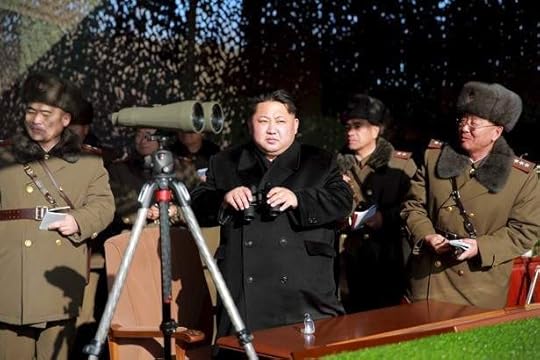
Updated at 1:57 a.m. on January 6
North Korea announced it had successfully detonated its first hydrogen bomb on Wednesday morning, signaling a surprising leap in nuclear weaponry for the reclusive totalitarian regime if the claim is verified.
The U.S. Geological Survey recorded a 5.1-magnitude seismic event about 11 miles from the North Korean town of Sunjibaegam in the country’s northwest. Chinese and South Korean officials immediately suspected the earthquake was artificial, according to the BBC.
Similar tremors in that area followed each of the country’s three previous nuclear-weapons tests, all of which occurred underground at the nearby Punggye-ri Nuclear Test Site. North Korea became the eighth declared nuclear-weapons state after its first test at the site in 2006; additional detonations followed in 2009 and 2013.
Each of the country’s three earlier tests detonated atomic bombs, which rely on nuclear fission to achieve their destructive purpose. Like a dropped water balloon hitting a sidewalk, atomic bombs crack open the dense atomic nuclei of large, unwieldy elements like uranium and plutonium to release tremendous amounts of energy.
Hydrogen bombs, by contrast, use nuclear fission only for their initial detonation, igniting a secondary fusion stage by compressing lighter atoms of deuterium and tritium together until they explode, like filling up a water balloon until it bursts. The chain reaction produces a far more powerful explosion than an atomic bomb.
Pyongyang dropped hints about a possible nuclear test in the weeks preceding Wednesday’s detonation. On Saturday, South Korea's Yonhap News Agency reported on Sunday that the North could be readying for a nuclear-weapons test. The reclusive communist state also reportedly tested a submarine-based ballistic missile last month.
The first reports that North Korea might have a hydrogen bomb also emerged in the waning days of 2015. KCNA, the state broadcaster of North Korea, quoted Kim Jong-un as describing the country as “a powerful nuclear weapons state ready to detonate a self-reliant A-bomb and H-bomb to reliably defend its sovereignty and the dignity of the nation” on December 10. Nuclear experts and the White House publicly expressed doubt about Kim’s hydrogen-bomb claim at the time.
From initial data available after Wednesday’s test, some nuclear and regional experts offered skepticism about the veracity of the North’s claim and its broader significance.
*IF* yield is c. 10 kT, seems unlikely to be true 2-stage thermonuclear bomb. Maybe a small boosted primary? Or a vanilla fission device?
— James Acton (@james_acton32) January 6, 2016
Helpful North Korea context from Denny Roy, of the East-West Center: pic.twitter.com/b6bvKsTfMM
— Adrienne LaFrance (@AdrienneLaF) January 6, 2016
South Korean officials quickly condemned the test nonetheless, describing it as a violation of multiple United Nations Security Council resolutions and hinting at possible future sanctions. Other regional leaders echoed the sentiment. “North Korea's latest nuclear test is a grave threat against our security and we absolutely cannot allow it,” Japanese Prime Minister Shinzo Abe told reporters, according to Asahi Shinbun. The test’s impact could also be felt in Asian financial markets.
The Korean won (USDKRW) has jumped to a three-month high on reports the DPRK may have carried out another nuke test pic.twitter.com/id6zLtJbOT
— Leisha Chi (@LeishaChiBBC) January 6, 2016
On the other side of the Pacific, the White House struck a cautious tone in its initial response to the reported nuclear test.
We are aware of seismic activity on the Korean Peninsula & have seen claims of a nuclear test. Statement: pic.twitter.com/WvyFkpJcZo
— WH National Security (@NSCPress) January 6, 2016
This story will be updated as more information becomes available.









Bernie Sanders’s Plan to Make Banking Affordable for Average Americans
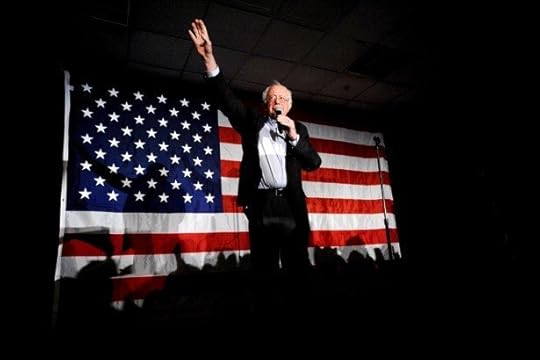
Bernie Sanders has made a name for himself by pushing in his presidential campaign for fundamental changes to the way financial institutions operate within the U.S.: He wants to reform the Federal Reserve, make ratings agencies nonprofits, and close the revolving door between Wall Street and government agencies. In a speech on Tuesday, he detailed plans—all of them highly ambitious, and many of them outside the purview of the president—that he hopes would make the banking system much more accessible to average Americans.
To Sanders, credit-card interest rates that top 20 percent and ATM fees as high as $5 are unacceptable. “The Bible has a term for this practice. It’s called usury. And in The Divine Comedy, Dante reserved a special place in the Seventh Circle of Hell for those who charged people usurious interest rates,” he said. Sanders said that if he were elected president, he’d push for a 15-percent cap on all credit-card interest rates and consumer loans, mirroring the rate cap credit unions must abide by for loans. And ATM fees, he said, shouldn’t be more than $2. “Big banks need to stop acting like loan sharks and start acting like responsible lenders,” he said.
More From Our Partners Can Taxes Encourage Better Corporate Behavior? How to End Homelessness in New York City A Home for Unlikely Neighbors
Can Taxes Encourage Better Corporate Behavior? How to End Homelessness in New York City A Home for Unlikely Neighbors Sanders’s plans represent an aggressive approach to rampant and growing economic inequality. But if he were elected president, his power to implement them would actually be quite limited. Many financial products are regulated at the state level, and when they aren’t, they are often governed by a federal agency such as the Consumer Financial Protection Bureau, notes Mehrsa Baradaran, a law professor at the University of Georgia. “There’s not much a president can do for some of these things. As far as tinkering around with those usury rates, that is far outside of the realm of the executive office,” she says. Instead, a president would have to push for this agenda and then encourage regulatory agencies to carry out the reforms.
One proposal that is within his power is the creation of a postal-banking system, which would have post offices offer some banking services. This would give Americans excluded from the mainstream consumer-financial system a more affordable option, one that is a safer alternative to payday lenders, which can charge customers interest rates as high as 300 percent.
Sanders has been a vocal critic of the way Wall Street operates and an ardent supporter of other politicians who want to reform America’s financial system. He’s been particularly supportive of the efforts Senator Elizabeth Warren, who helped establish the CFPB, the agency tasked with ensuring that financial institutions, from payday lenders to major banks, deal fairly and honestly with customers. The agency also investigates consumer complaints and comes up with rules for how banks and other finance outfits must deal with customers. Among their latest projects are efforts to regulate payday loans and pushing for fair and transparent lending practices. (The CFPB is one agency that actually has the power to implement some of the banking regulations that Sanders proposes.)
The banking industry, which makes a huge sum of money through fees for its services, would be strongly opposed to the firm regulations Sanders proposed on Tuesday. But in his speech, he hinted that he’s not only aware of this, but embraces it: “Will they like me? No. Will they begin to play by the rules if I’m president? You better believe it.”








Bernie Sanders’ Plan to Make Banking Affordable for Average Americans

Bernie Sanders has made a name for himself by pushing in his presidential campaign for fundamental changes to the way financial institutions operate within the U.S.: He wants to reform the Federal Reserve, make ratings agencies nonprofits, and close the revolving door between Wall Street and government agencies. In a speech on Tuesday, he detailed plans—all of them highly ambitious, and many of them outside the purview of the president—that he hopes would make the banking system much more accessible to average Americans.
To Sanders, credit-card interest rates that top 20 percent and ATM fees as high as $5 are unacceptable. “The Bible has a term for this practice. It’s called usury. And in The Divine Comedy, Dante reserved a special place in the Seventh Circle of Hell for those who charged people usurious interest rates,” he said. Sanders said that if he were elected president, he’d push for a 15-percent cap on all credit-card interest rates and consumer loans, mirroring the rate cap credit unions must abide by for loans. And ATM fees, he said, shouldn’t be more than $2. “Big banks need to stop acting like loan sharks and start acting like responsible lenders,” he said.
More From Our Partners Can Taxes Encourage Better Corporate Behavior? How to End Homelessness in New York City A Home for Unlikely Neighbors
Can Taxes Encourage Better Corporate Behavior? How to End Homelessness in New York City A Home for Unlikely Neighbors Sanders’s plans represent an aggressive approach to rampant and growing economic inequality. But if he were elected president, his power to implement them would actually be quite limited. Many financial products are regulated at the state level, and when they aren’t, they are often governed by a federal agency such as the Consumer Financial Protection Bureau, notes Mehrsa Baradaran, a law professor at the University of Georgia. “There’s not much a president can do for some of these things. As far as tinkering around with those usury rates, that is far outside of the realm of the executive office,” she says. Instead, a president would have to push for this agenda and then encourage regulatory agencies to carry out the reforms.
One proposal that is within his power is the creation of a postal-banking system, which would have post offices offer some banking services. This would give Americans excluded from the mainstream consumer-financial system a more affordable option, one that is a safer alternative to payday lenders, which can charge customers interest rates as high as 300 percent.
Sanders has been a vocal critic of the way Wall Street operates and an ardent supporter of other politicians who want to reform America’s financial system. He’s been particularly supportive of the efforts Senator Elizabeth Warren, who helped establish the CFPB, the agency tasked with ensuring that financial institutions, from payday lenders to major banks, deal fairly and honestly with customers. The agency also investigates consumer complaints and comes up with rules for how banks and other finance outfits must deal with customers. Among their latest projects are efforts to regulate payday loans and pushing for fair and transparent lending practices. (The CFPB is one agency that actually has the power to implement some of the banking regulations that Sanders proposes.)
The banking industry, which makes a huge sum of money through fees for its services, would be strongly opposed to the firm regulations Sanders proposed on Tuesday. But in his speech, he hinted that he’s not only aware of this, but embraces it: “Will they like me? No. Will they begin to play by the rules if I’m president? You better believe it.”








Has Hollywood Learned Anything About Diversity?

Despite high hopes and higher stakes, 2015 wasn’t quite the year that Hollywood solved its many issues with representation. It was a year that saw a depressingly white slate of Oscar nominees in January, followed by Emma Stone playing a character who’s half Asian in July’s Aloha. In November, The Hollywood Reporter was obliged to call out the whiteness of its annual actress roundtable issue.
And yet it was also a year in which Empire became TV’s biggest breakout hit in years, the encouragingly diverse Star Wars: The Force Awakens made more money than any movie ever produced, Viola Davis’s Emmy speech made waves, and works like Creed, Furious 7, Fresh off the Boat, and Master of None became critical and commercial hits. So it’s particularly baffling now that in looking ahead to the year in TV and film, so many upcoming projects feature primarily white actors. If 2015 proved anything, it’s that offering diverse actors and storylines in film and television is good for business. Why do studios seem to be slow in figuring it out?
Related Story
The Oscars Haven't Been This White in 19 Years
There’s plenty of evidence that the industry thinks 2015’s diversity boom was nothing more than a passing fad. Last March, Deadline published a piece about a “trend” in “ethnic casting” for TV that noted how the success of Empire and other shows with diverse casts had inspired studios to look for more actors of color in pilot season. It also included some hand-wringing from agents about their white clients getting less work (and eventually prompted an apology from the site). 2015’s fall season included shows like Dr. Ken, Quantico, Rosewood, The Player, and Minority Report with leads of color; but this winter feels a little more lacking, especially on the “prestige TV” front, where new shows like Billions, Vinyl, and even Fuller House are the biggest things on offer.
The premium network Starz has struck gold with prestige shows focused on underserved audiences including Power, Survivor’s Remorse, and Outlander, and has publicly acknowledged that it’s actively seeking viewers who are largely ignored by other cable networks. But the majority of HBO, Showtime, and Netflix dramas continue to largely focus on that ever-familiar protagonist: the angsty white guy.
The more conservative world of film has been even slower to react to calls for more characters and actors of color, since funding big-budget movies is often a costly gamble. The money-magnet Fast & Furious franchise, which features a notably diverse cast, started out as an unexpected hit for Hollywood in 2001 before it spiraled into a super-franchise; the Star Wars director J.J. Abrams has repeatedly said he thinks “it’s important people see themselves represented in film” when asked about his casting of the new movie. But it’s considerably harder to imagine studio bosses saying the same things behind closed doors. Abrams’s vision was crucial to Star Wars featuring a female Jedi and a black male Stormtrooper as its leads, and it paid dividends. Yes, the movie would have made money no matter what, but it’s undeniable that it appealed to the franchise’s broadest audience yet. And yet there’s nothing at all on the 2016 release slate with a similarly exciting cast.
The Hollywood Reporter at least noted that its 2015 roundtable of actresses in contention for an Oscar nomination was all white—the publication’s explanation, deemed lacking by many, was that they couldn’t identify a woman of color who was in contention for a major award. The message was: It isn’t the media, it’s the industry, so blame them. But it would have been easy for the magazine to invite actors of color who were on the fringes of the awards race—thereby using its power to draw attention to a more diverse talent pool.
This year’s Oscars might be just as anachronistic as THR predicted—as critical hits like Creed and Tangerine fail to gain traction in precursor awards, another whitewashed acting ballot seems more and more likely. And as the critic Mark Harris pointed out on Twitter, films focusing on female characters like Brooklyn, Inside Out, Carol, and Room have also failed to score with the all-important guild awards in advance of the Oscar nominations. “Are we looking at #OscarsSoMale?” he asked, referencing last year’s trending topic #OscarsSoWhite, which so dominated the conversation that the Academy president Cheryl Boone Isaacs publicly promised reform.
That reform has apparently begun in terms of a focus on expanding diversity in the voting ranks, but since there are thousands of Oscar voters, significant change won’t be felt for years. And that’s a shame: It’s easy to shrug off the significance of the Oscars each year, but aside from box-office returns, they’re the only thing the industry pays serious attention to. If actors of color receive awards recognition, they get cast in more movies—and studios are always happier to take financial risks when projects have Oscar potential. These are the crucial elements involved in making the industry more diverse as a whole.
Looking ahead to the year in big-budget films, it’s hard to be encouraged. Superhero franchises are the name of the game in 2016: The Marvel juggernaut rides on, but its first film featuring a black lead (Black Panther) isn’t released until 2018, while its first starring a female character (Captain Marvel) won’t hit theaters until 2019. Both had to be pushed back to accommodate a new Spider-Man film, whose star is contractually obligated to be white.
Warner Bros. may move a little quicker with its nascent DC superhero universe—Will Smith is one of the stars of the upcoming Suicide Squad, and Gal Gadot’s Wonder Woman appears in this year’s Batman v. Superman before her own feature is released in 2017. But like Marvel, its franchise continues to draw from characters created a great many decades ago, leaving less room for casting actors who look and act like today’s cinemagoers.
That’s why the cast of The Force Awakens inspired such excitement. It’s why Creed is that rare Hollywood reboot that manages to explore fascinating new thematic ground while telling a familiar story. It’s hard to conceive why their success hasn’t driven producers to understand that diversity in entertainment isn’t just a worthy goal—it’s good business. Progress is progress, but just a glance at 2016’s upcoming films and television shows how quickly it can stall out.









Atlantic Monthly Contributors's Blog
- Atlantic Monthly Contributors's profile
- 1 follower



